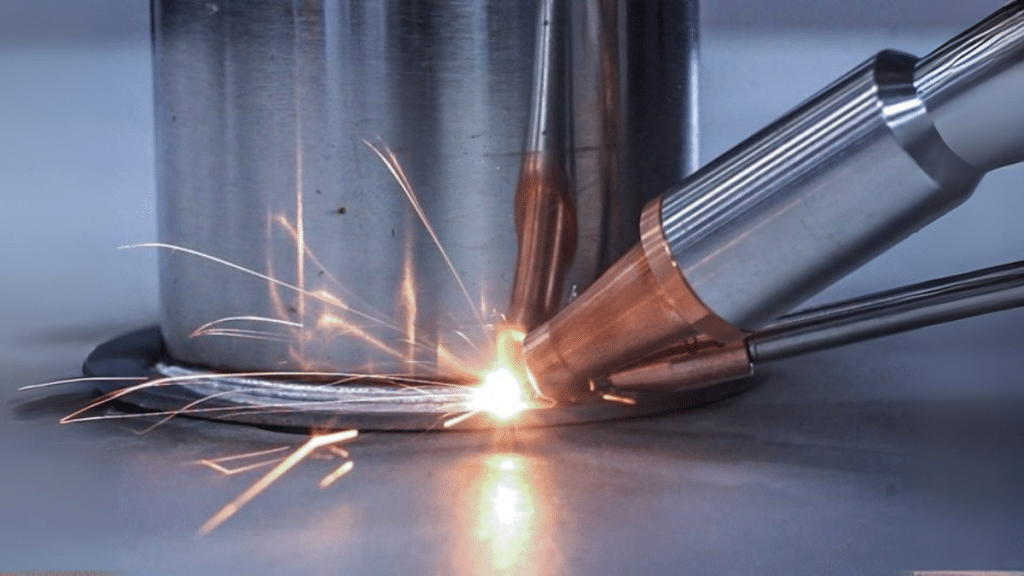Laser welding has emerged as a leading method for joining galvanized steel, offering industries a path to high-quality, efficient, and precise results. Unlike traditional welding, the laser process is faster, cleaner, and creates minimal heat distortion, making it an excellent choice for galvanized steel sheets. However, welding this zinc-coated material presents unique challenges that require specific knowledge and techniques to overcome.
Can You Laser Weld Galvanized Steel?
Yes, absolutely. Laser welding is a high-energy process perfectly suited for galvanized steel. Its ability to deliver a concentrated beam of energy results in high efficiency, deep penetration, and a very small heat-affected zone (HAZ). These characteristics are ideal for precision work and are why laser welding is widely used across the metal processing industry for materials like stainless steel, aluminum, and galvanized steel.
The key challenge with galvanized steel is its protective zinc coating. This coating must be managed carefully during the welding process to ensure a quality joint.
The Primary Challenge: Managing the Zinc Coating
The difficulty in welding galvanized steel stems from the properties of its zinc coating. Zinc has a much lower boiling point (around 907°C or 1665°F) than steel (around 1370°C or 2500°F). When the high-energy laser beam hits the surface, the zinc vaporizes before the steel even begins to melt. This rapid evaporation of zinc creates several potential problems:
- Porosity: Trapped zinc vapor within the molten steel can form bubbles, which lead to tiny holes, or porosity, in the finished weld. This weakens the joint.
- Spatter and Fumes: The vaporizing zinc can create spatter and produce fumes that are hazardous to the operator’s health.
- Inconsistent Welds: The zinc layer can absorb or reflect some of the laser’s energy, making it more challenging to achieve a consistent, well-formed weld seam.
Successfully welding galvanized steel is all about controlling these effects.
Advantages of Laser Welding Galvanized Steel
Despite the challenges, laser welding offers significant benefits over traditional methods like TIG or MIG welding, especially for galvanized steel.
The main advantage is the minimal heat-affected zone (HAZ). A laser delivers heat so precisely and quickly that the area surrounding the weld remains relatively cool. This is crucial for galvanized steel because it greatly reduces the amount of zinc coating that gets burned away. By preserving the protective coating right up to the edge of the weld, the material’s corrosion resistance is kept largely intact. This results in a cleaner, stronger, and more durable joint with minimal discoloration.
Key Practices for a High-Quality Weld
To overcome the challenges and achieve a strong weld, several factors must be carefully controlled.
1. Optimize Welding Parameters Finding the right balance of settings is critical.
- Laser Power: A medium power setting (typically 1,000W to 3,000W) is often used. This is enough to create a proper molten pool in the steel without excessively vaporizing the zinc layer.
- Welding Speed: The speed must be carefully calibrated. If it’s too fast, the weld may be incomplete. If it’s too slow, heat can build up and cause defects.
- Focus Position: Adjusting the laser’s focal point slightly can help manage the zinc vapor and ensure proper penetration without damaging the material.
2. Use a Shielding Gas A shielding gas, such as argon or an argon/CO₂ mix, is essential. It protects the molten weld pool from oxygen in the air, preventing oxidation and helping to stabilize the process for a cleaner weld appearance.
3. Consider a Filler Wire Using a welding wire can significantly improve the quality of the weld. The wire adds material to the joint, helping to manage the weld chemistry and prevent defects. Stainless steel or copper-based wires are often used as they can help counteract the effects of the zinc and improve the final properties of the weld.
4. Ensure Proper Safety and Ventilation Because the process vaporizes zinc, it releases fumes that are hazardous if inhaled. It is absolutely essential to work in a well-ventilated area and use appropriate personal protective equipment (PPE), including a respirator designed to filter metal fumes.
Handheld Laser Welders for Galvanized Steel
For many applications, particularly with thinner sheets, handheld laser welders are a highly effective and versatile solution. Modern machines are capable of welding galvanized sheets from 1mm up to 6mm thick, depending on the laser’s power. Manufacturers like Riselaser, for example, produce a range of these advanced handheld laser welding machines designed for such tasks.
Many new systems are multifunctional, often combining welding, cleaning, and cutting into a single 3-in-1 handheld device. This allows an operator to use the laser to remove surface contaminants before welding and even make precise cuts, all with one tool. These machines have become popular because they are often easier to operate than traditional welders, improve efficiency by up to four times, and produce consistently high-quality results.
Conclusion
Laser welding is a powerful and precise solution for joining galvanized steel. While the zinc coating presents challenges like evaporation and potential porosity, these can be effectively managed. By using optimized equipment settings, proper techniques, and robust safety measures, fabricators can produce clean, strong, and durable welds. The ability of laser technology to minimize heat input preserves the steel’s protective coating, making it a superior choice for maintaining the integrity and corrosion resistance of galvanized components.
